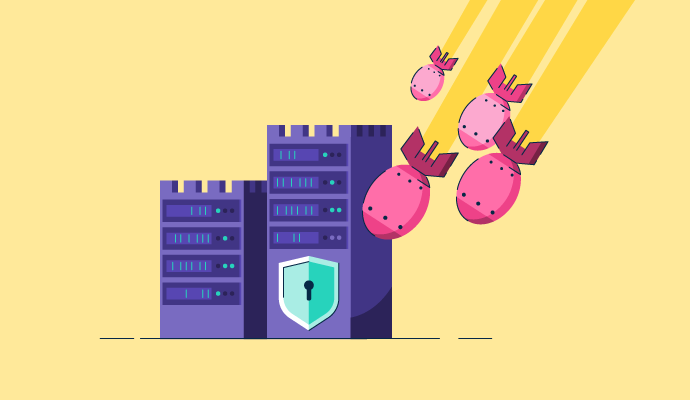In today’s digital landscape, cyberattacks and data breaches are a growing threat to companies of all sizes. Small and medium-sized businesses (SMBs) are particularly vulnerable, with 43% of cyberattacks targeting SMBs. Falling victim to a breach can result in devastating financial losses, reputational damage, and costly recovery efforts. By understanding the most common ways companies get breached, businesses can improve their cybersecurity defenses and reduce the risk of infiltration.
Here are the most common ways companies get breached or infiltrated, backed by key statistics.
Phishing Attacks
Phishing remains one of the most widespread and successful forms of cyberattack. In 2023, 91% of cyberattacks started with a phishing email, according to a report by Verizon. Phishing involves attackers sending deceptive emails that appear to come from legitimate sources, such as trusted companies or internal departments. The goal is to trick recipients into clicking on a malicious link or downloading an infected attachment, often leading to stolen login credentials or malware installation.
Example: A hacker might send an email that looks like it’s from the company’s HR department, asking employees to verify their login information. If an employee enters their credentials, the attacker can gain access to the company's network.
How to Protect Against It:
Educate employees about phishing and how to spot suspicious emails.
Implement email filters to block potential phishing attempts.
Use multi-factor authentication (MFA) for added security.
Weak or Compromised Passwords
Passwords are often the first line of defense, but 81% of data breaches are caused by weak or reused passwords, according to a report from Verizon. Cybercriminals use techniques like brute force or credential stuffing to exploit simple or reused passwords, gaining unauthorized access to company systems.
Example: Employees using simple passwords like "123456" or reusing passwords across multiple accounts make it easier for attackers to break into systems.
How to Protect Against It:
Require strong, complex passwords and encourage regular updates.
Implement multi-factor authentication (MFA) to add an extra layer of protection.
Use password management tools to store and generate secure passwords.
Outdated Software and Unpatched Systems
According to a report by Fortinet, 60% of data breaches involve vulnerabilities for which patches were available but not applied. Using outdated software and failing to apply security patches leaves companies vulnerable to cyberattacks. Hackers often exploit known vulnerabilities in unpatched systems to gain access to company networks or install malware.
Example: If a company’s operating system or software hasn’t been updated with the latest security patches, attackers can exploit those vulnerabilities to install ransomware or steal data.
How to Protect Against It:
Ensure that all software and systems are updated regularly with the latest security patches.
Use automated tools to manage and deploy patches.
Schedule regular security audits to identify and address vulnerabilities.
Ransomware Attacks
Ransomware has become one of the most damaging forms of cyberattack, with 51% of businesses experiencing a ransomware attack in 2022, according to Cybersecurity Ventures. Ransomware encrypts a company’s data, rendering it inaccessible until a ransom is paid. These attacks often start with phishing emails, malicious downloads, or unpatched vulnerabilities.
Example: A company might receive an email that, when opened, installs ransomware on the network. The attackers then demand a ransom to decrypt the data and restore access.
How to Protect Against It:
Regularly back up all critical data and store backups offline.
Educate employees on safe browsing and email practices.
Use advanced anti-malware and firewall protection to detect and block ransomware.
Lack of Employee Training
Even the most advanced cybersecurity systems are vulnerable to human error. According to IBM’s "Cost of a Data Breach" report, human error is a factor in 95% of all breaches. A lack of cybersecurity awareness and training can lead to careless mistakes, such as employees clicking on phishing links, using weak passwords, or falling for social engineering tactics.
Example: An employee might accidentally download malware from a seemingly legitimate source, compromising the entire network.
How to Protect Against It:
Conduct regular cybersecurity training sessions for all employees.
Implement a cybersecurity policy that employees must follow.
Encourage a culture of security awareness, where employees feel empowered to report suspicious activity.
Mobile Devices and Remote Work Vulnerabilities
With the rise of remote work and the use of mobile devices for business, there are more points of entry for cyberattacks. In fact, according to a study by Verizon, 85% of data breaches involve human error—a significant risk with remote employees accessing sensitive data on unsecured devices or networks.
Example: An employee accessing company data on an unsecured public Wi-Fi network could unintentionally expose sensitive information to attackers.
How to Protect Against It:
Use virtual private networks (VPNs) to secure remote access.
Implement mobile device management (MDM) to control and secure devices.
Ensure that remote devices have up-to-date security software.
Cyberattacks are evolving rapidly, and no company is immune. Understanding how businesses are most commonly breached—from phishing and weak passwords to outdated systems and ransomware—can help you take proactive steps to secure your organization.
At Advanced Office Solutions (AOS), we specialize in safeguarding businesses with comprehensive cybersecurity solutions. From employee training and regular updates to proactive monitoring and threat detection, our services are designed to minimize the risk of breaches and keep your business safe.


